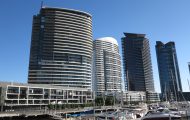Article (Broadcast transcript)
Media Watch: The difference between advocacy and analysis (11/03/2013) – Video and transcript through this link
My Comments
Very often, the media conversation about the National Broadband Network in Australia is so polarised.
The agenda amongst the technology community (including HomeNetworking01.info), the ABC, the Australian Labor Party, the Fairfax metropolitan press and other progressive groups is that the NBN should be primarily the fibre-to-the-premises setup. Conversely, the agenda amongst the business press, Sydney commercial talkback radio, The Australian, the Liberal-Party / National-Party Coalition and some other conservative groups is to implement a fibre-copper setup especially in brownfield areas due to it being considered the cheaper option. Some of this talk suggests the use of coaxial-cable runs for the copper run rather than VDSL2 (existing telephone cable) or Metro Ethernet (new RJ45 cable) for these runs.
In some cases, a lot of this talk plants seeds of doubt in the uninformed about whether we need next-generation broadband service or not and this can cause people to reject this kind of service. This was something I had observed through a conversation with a friend of mine who lives in Sydney and heard a lot of this talk through the Sydney commercial talkback radio. He has asked me whether we really need the NBN or not and what costs would be borne by us when we sign up to the service. Here I raised issues like NBN being a carrier for IPTV-based pay-TV as a key needs-driver; as well as the issue of free “to-the-door” cable like with telephony for urban areas.
I have been observing the UK and France situation where there has been real Internet-service competition including some fibre-based next-generation-broadband rollouts. In the UK, there have been the likes of Gigaclear running next-generation FTTP broadband to various villages which I have covered regularly on HomeNetworking01.info. As well, I have observed France’s highly-competitive Internet services, including the use of infrastructure competition (zones dégroupée for ADSL and multifibre FTTH for next-generation broadband). Some of these deployments also have had local-government financial assistance as well as, in some cases national or EU financial assistance.
Sometimes it is hard to sort out the real information from the rhetoric and this can be of concern for the consumer or small business owner who is thinking of a future-proof Internet service for their needs/

